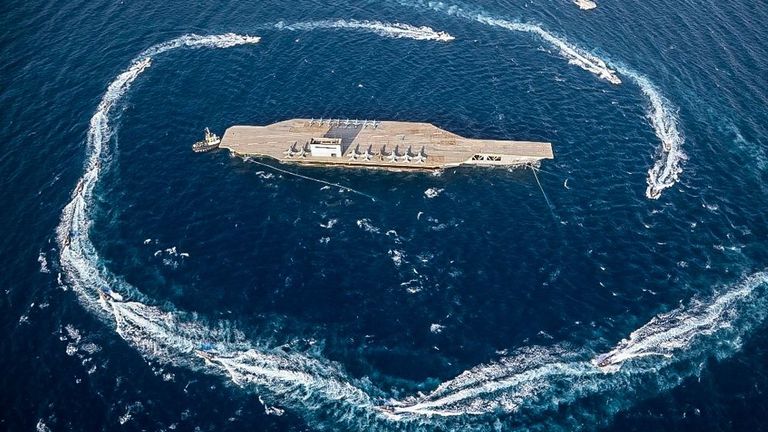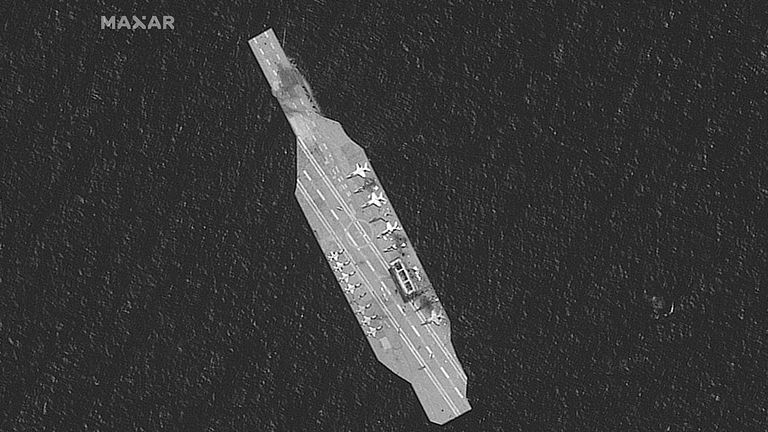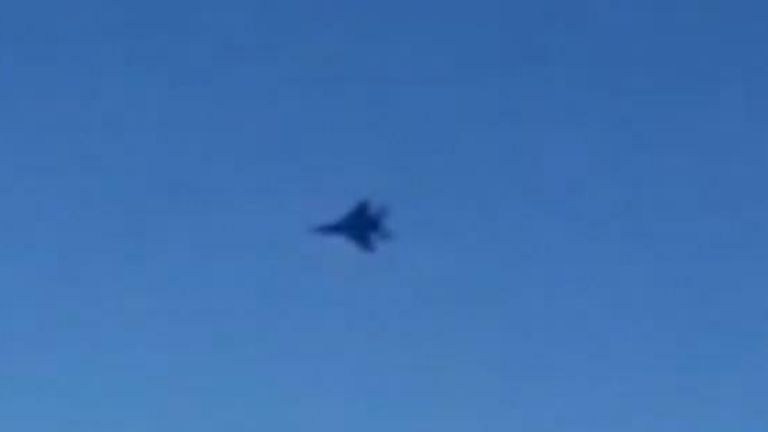Iran has launched ballistic missiles from underground bases at a mock-up of a US aircraft carrier in the strategically vital Strait of Hormuz, Iranian state television has said.
The US navy called Wednesday’s action “irresponsible and reckless”, accusing Tehran of trying to “intimidate and coerce”.
Drone footage captured by Iran’s Revolutionary Guard showed two missiles blasting out from covered positions in what appeared to be a desert plateau in central Iran, with debris flying up in the air in their wake.
The weapons were launched on Wednesday, said General Amir Ali Hajizadeh, the head of the group’s aerospace division.
He told state television it was first time the Revolutionary Guard had done this, though the paramilitary force is known to have vast underground bases hiding its ballistic missile arsenal.
It comes a day after American bases in Qatar and the United Arab Emirates were temporarily put on alert after ballistic missiles were launched by Iran as part of annual military exercises.
The strait is one of the most important commercial waterways in the world, through which 20% of the world’s oil passes.
The drills – named Prophet Mohammed 14th – were broadcast on state television and come at a time of increased tension between Tehran and Washington.
In the video, the mock-up – which resembles one of the Nimitz-class carriers the US routinely sails into the Gulf – is shown with dummy fighter jets on either side of its landing strip.
Missiles are then launched from a variety of angles, including some aimed at the carrier and one from a helicopter, which appears to hit the side of the fake warship.
Major General Hossein Salami, the commander of the Revolutionary Guards, told state television:”What was shown today in these exercises, at the level of aerospace and naval forces, was all offensive.”
Commander Rebecca Rebarich, spokeswoman for the US Navy’s Fifth Fleet, accused Iran of trying to “intimidate and coerce.
“While we are always watchful of this type of irresponsible and reckless behavior by Iran in the vicinity of busy international waterways, this exercise has not disrupted coalition operations in the area nor had any impacts to the free flow of commerce in the Strait of Hormuz and surrounding waters.”
The drill – and the American response to it – emphasised the lingering threat of military conflict between Iran and the US.
After a series of escalating incidents last year, tensions peaked in January when a US drone strike killed Qassem Soleimani, Iran’s most powerful general, at Baghdad airport.
Tehran responded to that strike by firing ballistic missiles that wounded dozens of American troops in Iraq.
A recent incident over Syria involving an American jet fighter approaching an Iranian passenger plane has also renewed tensions.
While both countries have grappled with the coronavirus pandemic, the issue is coming to the surface again as Washington tries to extend a years-long UN weapons embargo on Tehran that is due to expire in October.



